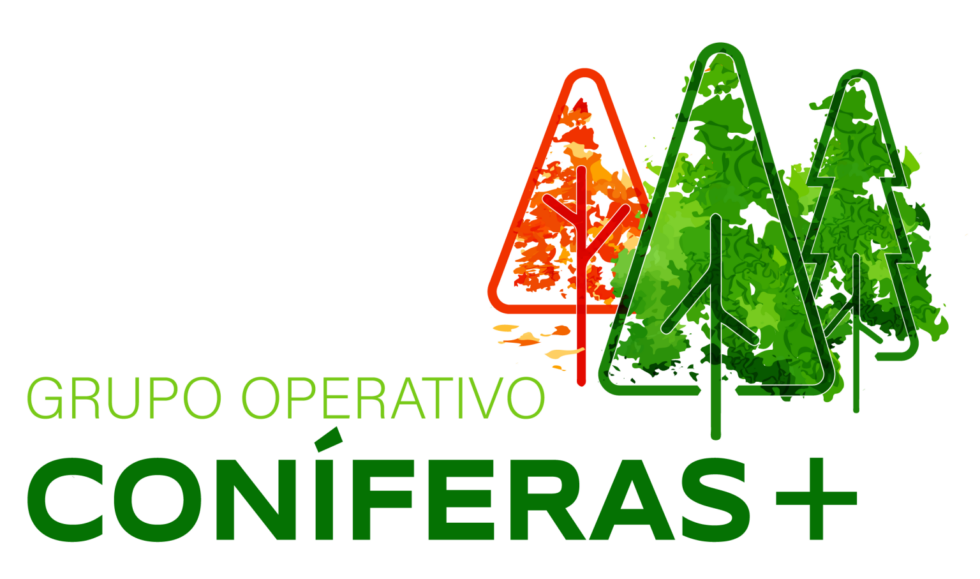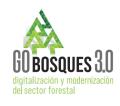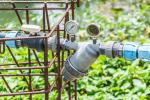
CONIFERAS Operational Group: Study of conifers complementary to forest plantations affected by diseases in the Cantabrian coast
- Type Operational group
- Status In progress
- Execution 2024 -2026
- Assigned Budget 499.059,00 €
- Scope Supraautonómico
- Autonomous community Castilla y León; País Vasco
- Main source of financing CAP 2023-2027
- Project website GO CONIFERAS
The GO CONIFERAS+ project aims to address the problems affecting the forestry-industry value chain in the Cantabrian coast, resulting from the disease-related impact of various pines. To this end, GO CONIFERAS+ will study different conifer alternatives from an ecological, productive, and industrial perspective. (Pseudotsuga menziesii, Pinus taeda, Pinus elliottii, Picea sitchensis, and Sequoia sempervirens)
The product for MAPA purposes is forestry and associated industries and aims to promote the use of coniferous wood already present in the country. The standardization of sawn timber for structural use is the first step in the foundation of the value chain. With sawn timber meeting standards and with defined properties, it opens the door to the development of laminated products for structural use, as in other countries (Germany, Austria, Italy, the United Kingdom, and Canada).
- Determination of pine stands (radiata and black pine) affected by different diseases, and their economic quantification of damages.
- Phytosanitary diagnosis and economic market study of alternative species.
- Territorial maps of ecological suitability for the establishment of the species and replacement of diseased conifers for the different alternatives.
- Quantitative inventory and national representative sample collection of Douglas fir as the species with the greatest current potential to supply wood to the primary processing industry.
- New forestry pathways from an economic, environmental, and climate change perspective for Douglas fir.
- Tool for assigning technological quality to individual and mass trees of the different alternatives studied (Pseudotsuga menziesii, Pinus taeda, Pinus elliottii, Picea sitchensis and Sequoia sempervirens).
- Obtaining the first visual and mechanical structural classification system for Douglas fir.
- New structural and carpentry products, manufactured and tested for optimal species.
Forest modeling combining the combined prediction of wood volumes and qualities, both from a point of view of size and abundance of defects in the wood, as well as from a mechanical point of view (strength and stiffness characteristics), has not been detected in Spain, although it has been in other countries such as France, Germany, Australia and New Zealand, pioneers in the development of this methodology.
In Spain, Cesefor has developed the first management diagrams that incorporate wood quality for Douglas fir stands in La Rioja. These results were published in 2018 and marked a shift in working and research methods in the forestry sector. Modeling techniques for the ecological suitability or adaptation of a site to a taxon use functions that define, in ecological space, the different relationships between the presence of the taxon and the range of values of the environmental variables considered to explain its distribution. The information needed to generate these functions includes both ground-truth data on the presence or presence and absence of the taxon under analysis, as well as the environmental attributes of the studied territory. These types of models have been used in multiple fields, including conservation plans.
LiDAR, or airborne laser, has already been successfully used to quantify the timber stock in a specific stand or even a forest region (Blanco et al., 2017; Tomé et al., 2017). The ability to work in grids allows for estimating the quantity of wood available there, the height of green branches, the development of the understory, the risk of felling, etc.
The use of sonic technology has enabled the characterization of the technological properties of masses and the development of predictive models for the modulus of elasticity in different species, both coniferous and hardwood. The use of resistography results in significant savings in time and costs.
- Restore, conserve, and enhance coniferous ecosystems in northern Spain, ensuring the supply and use of coniferous wood.
- Improve the competitiveness of primary producers by integrating them into the forestry-industry value chain through improved forest management, valorization, product standardization, and the expansion of structural timber.
- Improve industrial yields in the primary processing of wood.
- Increase biodiversity by promoting five taxa with different ecological requirements.
- R1 Inventory and diagnosis of affected conifers and alternative species. R1 Compilation of experiences and study of marking alternative species
- R2 Collection of soil and climate information, sampling and generation of territorial models for the ecological suitability of the alternative species.
- R3 Flight collection with lidar data and search for logging plots. Define sampling based on stand structure using lidar data.
- R3 Plot staking and field data collection of silvicultural and technological variables of wood. R3 Quantitative inventory based on LIDAR technology of Douglas-fir stands at base. Meta-analysis of data and determination of environmental and silvicultural variables influencing the technological properties of wood.
- R4 Proposals for different regular forestry routes. Evaluation of each route's economic, CO2 sequestration, and ecosystem benefits.
- R4 Guide for the irregular management of Douglas fir in the Cantabrian coast.
- R5 Models from NDT and visual variables that predict the technological quality of the tree.
- R5 Logistics for felling and sawing plots. Predictive models for the technological quality of log timber. Integration of predictive models into a pre-existing IT tool for auctioneers and owners.
- R6 Mechanical classification and bending tests of parts intended for construction (500 Douglas Parts)
- R6 Obtaining statistical adjustments and developing European standardization technical reports
- R7 Manufacturing with species of interest and evaluation testing of test specimens of different products: Glued Laminated Timber, Cross Laminated Board, slatted board, carpentry profiles, flooring.
- Coordinator/entity name: Cesefor Foundation
- Postal address: Las Casas Industrial Park, Calle C, P-4
- Coordinator/entity email: gonzalo.caballe@cesefor.com
- Telephone: 975 21 24 53
- Fundación Cesefor
- Fundación Cesefor
- Agresta
- Föra
- Cetemas
- Madera Plus
- Baskegur





